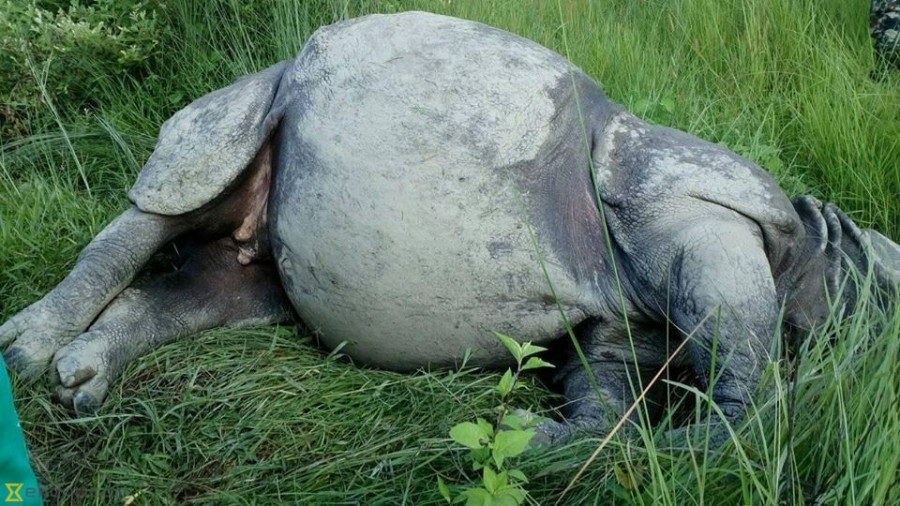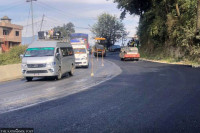National
Rhino deaths alarming
In the last 20 years, a total of 433 one-horned rhinos have died inside the Chitwan National Park due to various reasons. During the decade-long armed conflict that ended in 2006, 157 rhinos were killed by poachers.
Chandan Kumar Mandal
In the last 20 years, a total of 433 one-horned rhinos have died inside the Chitwan National Park due to various reasons. During the decade-long armed conflict that ended in 2006, 157 rhinos were killed by poachers.
However, a recent trend shows that old age, drowning, diseases like tuberculosis, oral and skin ulcers, and territorial battles between the animals have contributed to the rise in rhino deaths.
Last Tuesday, a male one-horned rhino was found dead in the Bankatta area of Madi Municipality, with its head buried in the swamp—but with its horn still intact.
Two weeks earlier, another rhino, aged between 35 and 40 years, was found dead in a swamp in the Lamotaal area, which was the first rhino death recorded this year.
In the past two months, four rhino deaths have been recorded inside the Chitwan Park, all blamed on natural causes. In the last two years, 51 one-horned rhinos, most of them reportedly due to natural reasons, died inside the park, according to CNP records.
Only one rhino was killed by poachers in the last four years, which officials say is a testament to the improved conservation efforts and intensified security measures. While the protected area has controlled poaching of one-horned rhinos, which dwell only in the plains bordering India, the growing number of deaths due to natural causes has emerged as a conservation challenge.
“We have to collect details on the nature of deaths in recent years. Habitat management and other measures required to control deaths can be identified only through a study,” Bed Kumar Dhakal, chief conservation officer at the Chitwan National Park, told the Post.
Prior to this spike in rhino deaths, natural causes claimed an average of 15 rhinos every year. Last year, eight rhinos died because of old age while four succumbed to injuries after a territorial battle.
The devastating floods last year that wreaked havoc across the Tarai, including the protected areas in the belt, killed four rhinos after they were swept away. Four other rhinos died in tiger attacks.
The number of natural deaths has also been linked with the growth in the rhino population. “Poachers killed rhinos for their horns. As poaching has stopped, it is also possible that rhinos in their old age are dying natural deaths,” said Nurendra Aryal, assistant chief conservation officer at the national park.
According to Laxman Prasad Poudyal, an ecologist at the Department of National Park and Wildlife Conservation, the rate of deaths due to natural causes may be seen as a normal phenomenon because of the high rhino population in the park.
“The existing number of rhinos in the Chitwan National Park is impressive, close to the numbers we had in the 1950s,” said Poudyal, adding that a study of age group and gender of dead rhinos could determine the causes.
Poudyal also suggested that territorial battles may be minimised if the rhino population, which is highly concentrated in the western part of the park, is minimised by relocating the endangered species to other areas.
According to the 2015 count, Nepal is home to 645 rhinos—605 in Chitwan, 29 in Bardia National Park, eight in Shuklaphanta National Park, and three in Parsa National Park. The number of rhinos, which fell sharply in the 1950s and 60s, started to rebound after establishment of the Chitwan sanctuary in 1973.
Fatalities
Fiscal Year Number of deaths
2013-14 11
2014-15 10
2015-16 15
2016-17 25
2017-18 26
Source: Chitwan National Park




 17.67°C Kathmandu
17.67°C Kathmandu









%20(1).jpg&w=300&height=200)





